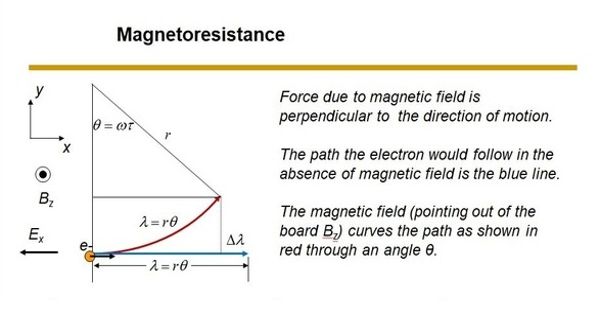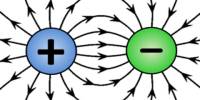Magnetoresistance, the change of a material’s resistivity with the application of a magnetic field, is a well-known phenomenon. Magnetoresistance is the tendency of a material (often ferromagnetic) to change the value of its electrical resistance in an externally-applied magnetic field. There are a variety of effects that can be called magnetoresistance. The resistance of some of the metal and the semiconductor material varies in the presence of the magnetic field, this effect is called magnetoresistance.
Magnetoresistance refers to a change of electrical resistance of a material as a response to an external magnetic field. It is the change in electrical resistance under an external magnetic field at the atomic level, which is of great interest both fundamentally and technologically.
Magnetoresistance, where the resistance of the material changes with an applied magnetic field, occurs in all metals. Some occur in bulk non-magnetic metals and semiconductors, such as geometrical magnetoresistance, Shubnikov–de Haas oscillations, or the common positive magnetoresistance in metals. Classically, the MR effect depends on both the strength of the magnetic field and the relative direction of the magnetic field with respect to the current. Other effects occur in magnetic metals, such as negative magnetoresistance in ferromagnets or anisotropic magnetoresistance (AMR).
It works on the principle of electrodynamics, which states that the force acting on the current place in the magnetic field changes its direction. In the unavailability of the magnetic field, the charge carriers of the magneto resistor move in the straight path.
Finally, in multicomponent or multilayer systems (e.g. magnetic tunnel junctions), giant magnetoresistance (GMR), tunnel magnetoresistance (TMR), colossal magnetoresistance (CMR), and extraordinary magnetoresistance (EMR) can be observed.

The magnetoresistor is used for determining the presence of a magnetic field their strength and the direction of the force. It is made of indium antimonide or indium arsenide semiconductor material. The first magnetoresistive effect was discovered in 1856 by William Thomson, better known as Lord Kelvin, but he was unable to lower the electrical resistance of anything by more than 5%.
Today, systems including semimetals and concentric ring EMR structures are known. In these, a magnetic field can adjust the resistance by orders of magnitude. The resistance of the magneto resistor is directly proportional to the magnetic field, i.e., their resistance raises with the increase of the magnetic field. The variation in resistance occurs because of the magneto effect.
The magnetoresistor operates without physical contacts which is their major advantage. Since different mechanisms can alter the resistance, it is useful to separately consider situations where it depends on a magnetic field directly (e.g. geometric magnetoresistance and multiband magnetoresistance) and those where it does so indirectly through magnetization (e.g. AMR and TMR). The magnetoresistor has various applications like it is used in the hard disk of the computer, an electronic compass, for measuring the current, etc.
Information Source:
















